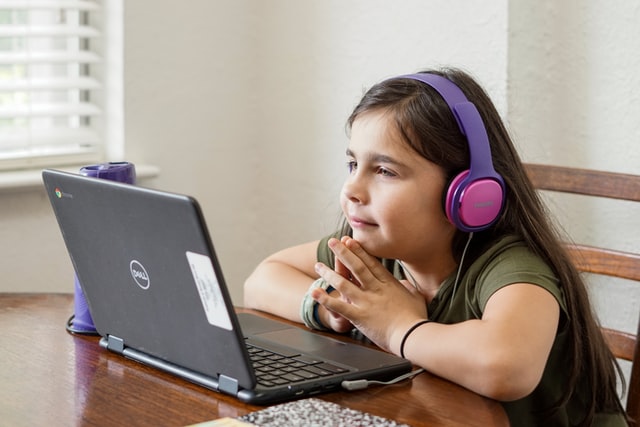Hmm, good question.
Years before covid arrived on our shores, the WHO classified a global pandemic of a different kind.
One of Display screen users’ 3D vision loss.
A few years later, in 2018, regulations were released to help mitigate this 3D vision loss, in the guise of WCAG 2.1 Colour Contrast Validation Standard for e-learning & websites. (HSE RR5612007)
It was created to recognise the 2007 statistics of 58% of those using digital display screens in the workplace presenting with a range of visual and physical repetitive stress injuries, often referred to as MSD’S – Musculo-Skeletal Disorders.
In 2020, MSD’s which are conditions affecting muscles, nerves, tendons, joints, cartilage and spinal discs, often caused by repetitive stress injuries and adaptations, often caused by manual handling and Display Screen Equipment use – have persisted as the second highest cause of ill health’.
The number of children now presenting with 3D vision loss has skyrocketed and is linked to overexposure to the near and close up, prolonged periods of display screen use, coupled with lack of time outside in natural daylight.
So, it’s not without reason that wellness and health experts are screaming at you to put your phone down, your laptop away and “disconnect” and want you to do the same for your kids.
No one anticipated the 2020/21 pandemic and how that would increase screentime.
Yet here we are, and still today, no one in ‘power’ mentions the pandemic is increasingly disrupting children’s eyesight, in effect mirroring the visual repetitive stress injuries seen in the workplace.
We know the addiction to social media is endemic (it’s designed to be). Netflix got many of us through lockdowns, and zoom was essential for family contact and work. But what if reducing screentime or exposure control is not an option?
We’ve all read the articles about reducing screen time for your children, but what do you do when life is lived online or through a screen, and you can’t reasonably reduce the amount of time online?
According to a recent study, the incidence of ocular problems has dramatically increased in line with the continuous rise in digital media consumption.
An estimated 49.8% (4.8 billion) and 9.8% (0.9 billion) of the global population will have myopia or high myopia.
Myopia is short-sightedness. But it’s more than simply wearing glasses because distant objects appear blurred. It’s also about distance and depth perception.
Which impacts the way we live our lives.
It’s not able to see loved ones faces at a distance. Driving becomes more challenging, and navigating life becomes more difficult and expensive due to eye checks every year.
But children were learning online before 2020, and with digital literacy programmes sponsored by Apple, computers have been steadily making their way into schools. Then, with the pandemic, online schooling became the norm.
Preschool? Screentime is there, too, with a third of preschool toddlers having their own tablet.
UK children spend an average of 23 hours a week online or looking at a screen.
UK adults spend over 5 hours a day – and we don’t believe this solely refers to the time at work.
Digital display screens are here to stay, so we need to become savvy about mitigating the harms they do because exposure control alone, limiting time online, is challenging.
So, we won’t tell you to get your kids off their screens. Instead, we will give you the information to make informed decisions for yourself and your children.
The Eye Science of fatigue is similar to sleep fatigue in terms of triggering the HPA Axis of hormones directly linked to stimulating our stress responses.
This means it activates the survival fight, flight or freeze reactions to a real or perceived threat.
In adults, this activation can result in cyclical behaviour.
For example, knowing you can’t reduce the stressors/fatigue related irritability in the workplace, you go home in a mood, too often self-medicate, unwind while still over-stimulated by staying on-screen, and then can’t sleep—the cycle repeats.
Translate this behaviour to children, and they come home moody, slump in front of the pc, and stay up watching videos or playing video games, messaging friends, and can’t sleep. The cycle repeats.
So how do you do best for your child, knowing they will be online for most of the working week and that it impacts their physical, mental and emotional health?
With less than a couple of weeks to go before it’s ‘back to school’, the first step is to be aware of the school environment and policies regarding screens.
Talk to the school – do they have a policy regarding phone use?
- Is there one for the amount of online time allowed per session, per day?
- Do they have enforced vision breaks every 20 minutes?
- Are they aware of calibrating digital display screens to reduce vision stress and eye strain?
- Do they know how to make reasonable adjustments – e.g. re-calibrate Screen Colour Contrast, increase the font size, avoid glare and/or ask for help to access accessibility features?
- Ask too about their school accessibility policy and whether they actually have an Accessibility Statement. For example, do they have a policy of complying with Accessibility Regulations for e-learning and digital display screens? (Spoiler: it’s been over two years since introduced so they should be compliant).
- Are they compliant with sufficient ambient lighting policies surrounding day and/or supplemental artificial work-lighting, and are the display screen positioned so free from glare?
The aim is to reduce the eye fatigue that leads to general fatigue and the cycle outlined above.
Kids use their phones in school, and they use PC’s – so teach them how to adjust the screen brightness to reduce glare. The glare from an overhead light or screen makes it much harder for our eyes to focus, which cause the eye muscles to become tired as they overwork – much like doing too many reps at the gym.
Laptops, again if it belongs to your child, adjust the screen performance – the brightness, font and text size to suit them, and of course, get them their own personal DSO themed background colour that reduces the colour contrast.
The DSO reduces fatigue and mitigates against the likes of screen fatigue, which will impact their learning.
We have an entire page dedicated to mitigating the risks of digital display screens, plus a post that outlines 14 quick and easy things you can do today.
Of course, reducing time online is essential; using the 20-20-20 rule of after 20 minutes look away for 20 seconds, at something 20 feet away is a must, perhaps you could pass this onto your kid’s school too?
Schools will have a lot o their plates in 2021, the attainment gap is widening, and some now say children from more deprived areas are a good 22 months behind their more affluent peers. However, further damaging eyesight and increasing stress for children due to poorly calibrated screens don’t need to be part of the issue.
If you’ve reached this far, this video might be worth your time. We are addicted to our smartphones; we miss out on human interaction when we’re online, and perhaps we can all benefit from turning off the devices now and then?
Ultimately, it’s the human interaction, interpersonal relationships in person or on-screen that is essential for children’s inclusion, growth, learning and development, not their smartphones.
 Text
Text 



